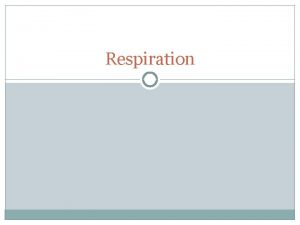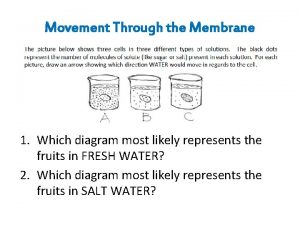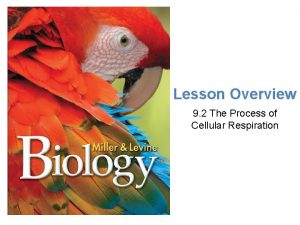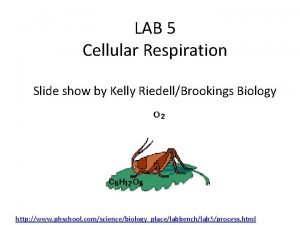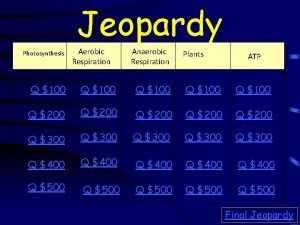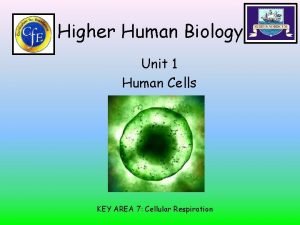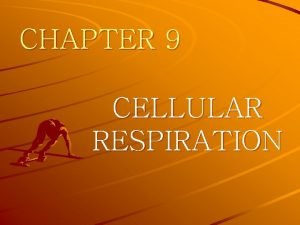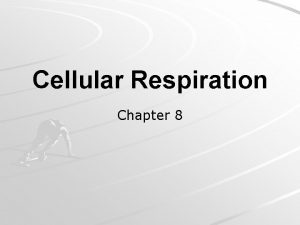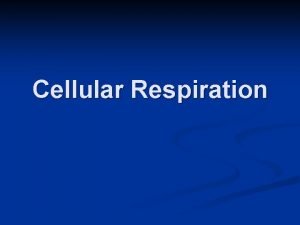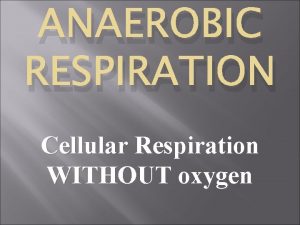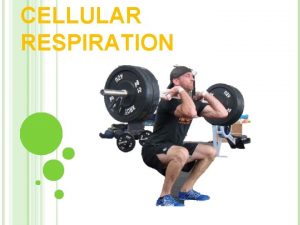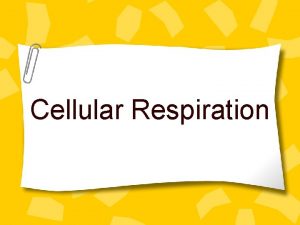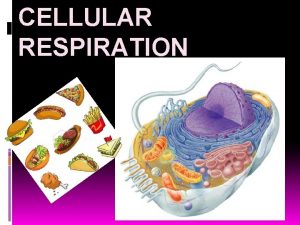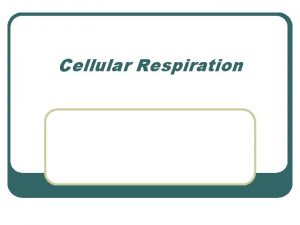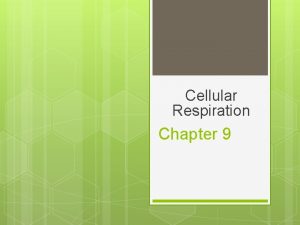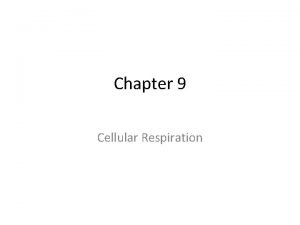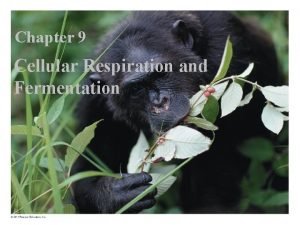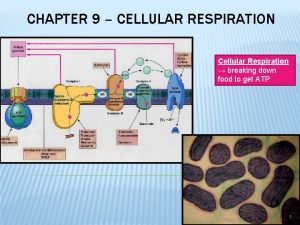Cellular Respiration Chapter 9 Cellular Respiration A series
























- Slides: 24

Cellular Respiration Chapter 9

Cellular Respiration �A series of coordinated enzyme-catalized reactions that harvest free energy from simple carbohydrates �Glucose ATP �Occurs in *all living cells

Carbohydrates: Glucose �Free energy is stored in chemical bonds

Evolved Energy Strategies

EES: Body Temperature Regulation �Endothermic Organisms � Metabolism �Ect 0 thermic Organisms � Environment

EES: Reproduction �Continuous breeders � Usually have constant supply of energy �Seasonal breeders � Follows patterns of energy availability

EES: Metabolic Rate �Small organisms � high metabolic rate �Large organisms � low metabolic rate �Excess energy � Storage �Deficient energy � Death

Aerobic Cellular Respiration

Types of Cellular Respiration �Type 1: Aerobic Respiration �Requires O 2 �Type 2: Anaerobic Respiration �Does not require O 2

Mitochondria Structures �Matrix: � Fluid inside the mitochondrion �Cristae: � Internal membrane in the mitochondrion

Aerobic Cellular Respiration �Chemical process which uses the mitochondria C 6 H 12 O 6 + O 2 CO 2 + H 2 O + ATP

Aerobic Cellular Respiration

Aerobic Cellular Respiration

Glycolysis: Process �Glucose breaks down into pyruvate in the cytoplasm �Products: �small amount of ATP molecules �electron carrier molecules (NADH)

Krebs Cycle: Process �If O 2 is present… �Pyruvate breaks down into CO 2 and enters the matrix �Products: �small amount of ATP via substrate level phosphorylation �electron carrier molecules (NADH & FADH 2)

Oxidative Phosphorylation: Process �NADH & FADH 2 donate electrons (e-) to cristae �Proteins use e- to pump H+ ions across the membrane �Oxygen accepts e- & H+ transforms into H 2 O �ATPsynthase uses H+ ions and generate many ATP!

Energy transfer during Aerobic cellular Respiration �Start with Chemical Energy (Glucose) �Convert to Usable Chemical Energy (many ATP) �Use ATP and release Heat Energy

Audio/visual representations �Animation: �http: //www. sumanasinc. com/webcontent/animations/c ontent/cellularrespiration. html �Rap: �http: //www. youtube. com/watch? v=VCp. Nk 92 usw. Y

Anaerobic Respiration

Types of Cellular Respiration �Type 1: Aerobic Respiration �Requires O 2 (Very efficient) �Type 2: Anaerobic Respiration �Does not require O 2 (inefficient)

Evolution of anaerobic respiration � 3. 5 billion years ago: � Ancient prokaryotes lived without O 2 �Today: � Prokaryotes don’t have mitochondria � Eukaryotes O 2 supply fluctuates

Anaerobic Cellular Respiration �Occurs in 2 steps: � 1. Glycolysis (2 ATP) � 2. Lactic Acid Fermentation C 6 H 12 O 6 CH 3 CHOHCOOH + ATP OR � 1. Glycolysis (2 ATP) � 2. Alcoholic Fermentation C 6 H 12 O 6 C 2 H 5 OH + CO 2 + ATP

Lactic Acid Fermentation �Pyruvate Lactic Acid � How bacteria makes yogurt � No ATP

Alcoholic Fermentation �Pyruvate Ethyl Alcohol � How yeast makes bread � No ATP
 Chapter 8 section 3 cellular respiration continued
Chapter 8 section 3 cellular respiration continued Chapter 9: cellular respiration: harvesting chemical energy
Chapter 9: cellular respiration: harvesting chemical energy Explain how amp stimulates cellular respiration
Explain how amp stimulates cellular respiration Chapter 9: cellular respiration: harvesting chemical energy
Chapter 9: cellular respiration: harvesting chemical energy Cellular respiration redox
Cellular respiration redox The gray-brown haze often found over large cities is called
The gray-brown haze often found over large cities is called Cellular respiration steps
Cellular respiration steps Aerobic vs anaerobic
Aerobic vs anaerobic Fermentation diagram
Fermentation diagram Why is cellular respiration important
Why is cellular respiration important The process of photosynthesis and cellular respiration
The process of photosynthesis and cellular respiration What's the equation for cellular respiration
What's the equation for cellular respiration How are internal and external respiration alike
How are internal and external respiration alike Photosynthesis equation
Photosynthesis equation Photosynthesis recipe card
Photosynthesis recipe card Electron carriers in cellular respiration
Electron carriers in cellular respiration Overview of cellular respiration
Overview of cellular respiration Aerobic respiration overview
Aerobic respiration overview Overview of cellular respiration
Overview of cellular respiration Overview of cellular respiration
Overview of cellular respiration Lab bench cellular respiration
Lab bench cellular respiration What is the word equation for cellular respiration
What is the word equation for cellular respiration Higher human biology cellular respiration
Higher human biology cellular respiration Equation of cellular respiration
Equation of cellular respiration Cellular respiration reactants
Cellular respiration reactants







